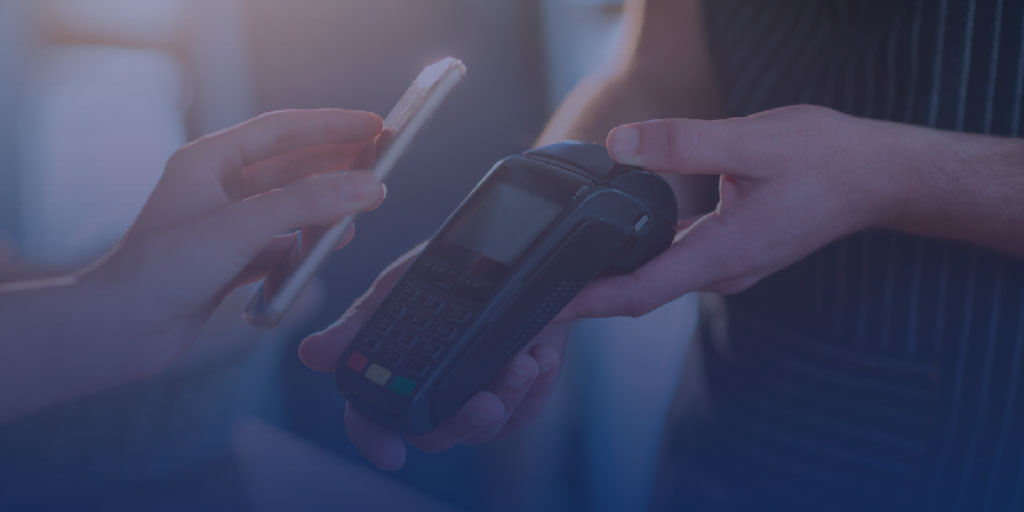Contactless technology opens door to supply chain efficiencies, but privacy concerns linger
At least for now, business as usual for the electronics supply chain includes dealing with Covid-19 and the unrelenting efforts to stop the spread of the virus. Among the range of measures, contactless technology has emerged as a key tool to keep employees and customers safe by reducing both person-to-person contact and the use of paper-based systems.
Consumer sector takes the lead
Currently, the consumer packaged goods sector is leading the charge. Large electronics manufacturers, for example, quickly shifted its delivery methodology to eliminate the need for close contact.
“In response to Covid-19, our delivery partners are offering no-contact delivery in your area,” Apple said in a statement. “Drivers may ask for verbal confirmation of receipt from a safe distance to satisfy the signature requirement or may leave lower-cost shipments at your door with no signature required.”
At the end of June, the Consumer Brands Association announced the establishment of a task force to study the impact of contactless pick-up and delivery protocols to create greater efficiencies and reduce employee risk during deliveries. The group, which includes manufacturers, supply chain partners, and retailers, is hoping to develop scalable, uniform standards for safely transporting and exchanging freight, with an initial focus on electronic bills of lading (eBOL).
“Covid-19 challenged CPG companies to keep their supply chains moving efficiently and their workers healthy in a tremendously difficult environment,” said Tom Madrecki, Consumer Brands Vice President for supply chain and logistics. “As CPG companies identify ways to increase supply chain efficiencies and ensure employee safety, electronic delivery verification through a contactless pick-up and delivery process is a natural solution.”
Removing contact with technology
Contactless technologies can, in addition to their primary purpose, be leveraged through digital platforms that give workers real-time updates on the movement of goods.
“As shippers continue to build more efficient and resilient supply chains, the eBOL fills in a gap that many clients have been asking for,” said Henry Blum, Senior Manager at Accenture. “The touchless BOL will result in entry-error reduction, increased visibility to OS&Ds (over, short, and damaged), [and will help shippers] drive lower transportation costs and benefit their green footprint.”
Another development? Contactless payment options are booming. These technologies provide a secure way to pay for the purchase of goods or services via smart cards without signing or entering a pin. The Global Contactless Payments market, which accounted for $8 billion in global sales in 2018, is expected to reach $24.99 billion by 2027, growing at a compound annual growth rate (CAGR) of 13.5% during the forecast period, according to a recent report from Stratistics MRC.
Inherently, these payment efforts increase the amount of personal information that is embedded on the card. At the same time, the security concerns are minimal.
According to Secure Technology Alliance, “The primary difference between a contactless payment and other commonly used methods is that the contactless payment device uses RF technology to send payment account information to the merchant’s POS terminal, instead of requiring the payment card’s chip to be inserted or magnetic stripe to be swiped. Contactless payment devices are designed to operate at very short ranges — less than one to two inches — so that the consumer needs to make a deliberate effort to present the card or mobile device to the POS reader to initiate the payment transaction.”
Contactless security increases privacy concerns
Touchless security, which has traditionally integrated security cameras and proximity card readers to manage facility and office access, also manages risk of exposure to Covid-19. The technology often relies on facial recognition or other biometrics, combined with alternative identification or two-factor authentication via mobile phone. All of these approaches bring privacy concerns.
And there are other issues as well. Facial recognition software uses artificial intelligence to compare several images for identification. Although smartphone integration has made people increasingly used to the technology, it does not always yield accurate results.
“Research has shown the systems are less accurate in recognizing the faces of people of color and come with risk that they may be deployed disproportionately in marginalized communities,” according to a recent article in Stat.
Other objections include:
- The technologies are relatively untested in terms of accuracy.
- Those being scanned have not had an opportunity to give consent.
- The technology is being used for identification rather than authentication.
As organizations continue to navigate the complexity of supply chain management in the midst of a pandemic, it will be critical to weigh the importance of individual privacy, as well as the potential upside of payment, tracking, and security processes that keep all parties safe. The use of contactless technology is likely to keep growing.
Related posts:

